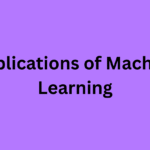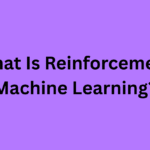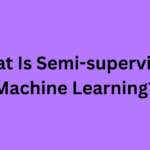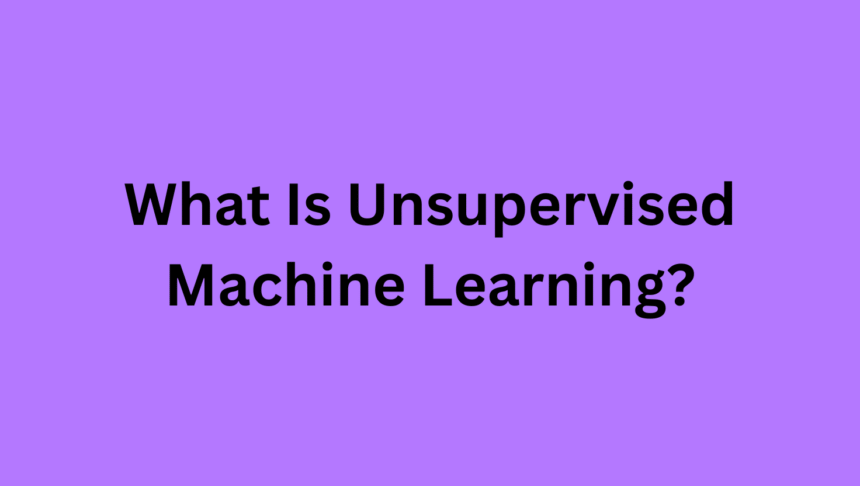Unsupervised Machine Learning is a branch of artificial intelligence where models analyze unlabeled data to discover hidden patterns, structures, or relationships without explicit guidance. Unlike supervised learning, there are no predefined labels or target outputs. Instead, the algorithm explores the data independently to identify intrinsic groupings, reduce complexity, or uncover associations.
Concepts of Unsupervised Machine Learning:
1️⃣ No Labels: The model works with raw data (e.g., customer purchase history, sensor readings) without predefined categories or outcomes.
2️⃣ Pattern Discovery: It identifies natural clusters, correlations, or anomalies in the data.
3️⃣ Types of Tasks:
- Clustering: Grouping similar data points (e.g., customer segmentation).
- Dimensionality Reduction: Simplifying data while preserving key features (e.g., compressing images).
- Association Rule Learning: Finding relationships between variables (e.g., “customers who buy X also buy Y”).
Common Algorithms:
1️⃣ Clustering:
- K-Means: Partitions data into “k” clusters based on similarity.
- Hierarchical Clustering: Builds nested clusters using tree-like structures.
- DBSCAN: Groups data based on density.
2️⃣ Dimensionality Reduction:
- PCA (Principal Component Analysis): Reduces features while retaining variance.
- t-SNE: Visualizes high-dimensional data in 2D/3D.
3️⃣ Association:
- Apriori Algorithm: Identifies frequent itemsets in transactional data.
4️⃣ Neural Networks:
- Autoencoders: Compress and reconstruct input data to learn efficient representations.
How It Works:
1️⃣ Data Preparation:
- No labels are needed. Use raw, unlabeled data (e.g., customer behavior logs, untagged images, raw text).
- Preprocess data similarly (clean, normalize, handle missing values).
2️⃣ Model Training:
- Model discovers hidden patterns without labels.
-
Optimizes intrinsic objectives like:
-
Clustering similarity (e.g., K-means minimizes intra-cluster distance).
-
Dimensionality reduction (e.g., PCA maximizes variance retained).
-
Association rules (e.g., Apriori finds frequent item patterns).
-
- No “correct” answer to compare predictions against.
3️⃣ Evaluation:
-
No ground truth exists, so evaluation is subjective or uses proxy metrics:
-
Clustering: Silhouette score (cohesion vs. separation), Davies-Bouldin index.
-
Dimensionality Reduction: Reconstruction error (autoencoders), variance explained (PCA).
-
Anomaly Detection: Precision/recall (if some labels exist) or domain validation.
-
4️⃣ Deployment:
-
Use discovered patterns for tasks like:
-
Customer segmentation: Group users into clusters for targeted marketing.
-
Recommendation systems: Find associations (e.g., “users who bought X also bought Y”).
-
Data compression: Reduce dimensions for efficient storage/processing.
-
Anomaly detection: Flag unusual transactions or system behaviors.
-
Example:
💡Customer Segmentation Using Clustering (K-Means Algorithm)
Problem Statement: A retail company wants to group its customers into distinct segments based on purchasing behavior (e.g., spending habits, frequency, product preferences) to tailor marketing strategies. However, they have no pre-defined labels or categories for these groups.
Unsupervised Approach:
- Algorithm: K-Means Clustering (a common unsupervised technique).
- Input Data: Unlabeled customer transaction data (e.g., total spend, purchase frequency, product categories).
- Goal: Discover natural groupings (clusters) in the data without prior knowledge of customer categories.
🔁 Steps:
1.) Preprocessing: Normalize/scale features (e.g., spending amounts vs. frequency).
2.) Cluster Identification:
-
The algorithm groups customers into “k” clusters based on similarity in their features.
-
For example, it might identify:
-
Cluster 1: High spenders, frequent buyers.
-
Cluster 2: Budget shoppers, occasional buyers.
-
Cluster 3: Seasonal shoppers (e.g., holiday-specific purchases).
-
3.) Visualization: Plot clusters using techniques like PCA (Principal Component Analysis) to reduce dimensions.
✅ Outcome:
-
The company uses these clusters to design targeted campaigns:
-
Offer loyalty rewards to Cluster 1.
-
Send discount coupons to Cluster 2.
-
Time promotions for Cluster 3 around holidays.
-
🤔 Why Is This Unsupervised?
- No labels (e.g., “loyal customer” or “discount seeker”) were provided upfront.
- The algorithm inferred patterns only from the raw data’s structure.
Applications:
- Customer Segmentation: Grouping users by behavior for targeted marketing.
- Anomaly Detection: Flagging fraud in banking transactions or network intrusions.
- Recommendation Systems: Suggesting products based on purchase patterns.
- Data Preprocessing: Cleaning and simplifying datasets for downstream tasks.
- Genomics: Identifying gene expression patterns.
Advantages of Unsupervised Machine Learning:
- Works with abundant, unlabeled data (common in real-world scenarios).
- Reveals insights humans might overlook (e.g., hidden customer segments).
- Reduces data complexity for better visualization and analysis.
Challenges:
- Results can be subjective or hard to interpret.
- No clear metrics for evaluation (unlike supervised learning’s accuracy or MSE).
- Requires domain knowledge to validate findings (e.g., determining optimal cluster count).
Unsupervised machine learning is a branch of artificial intelligence where algorithms analyze datasets without pre-existing labels or explicit guidance. Unlike supervised learning, which relies on labeled outputs to train models, unsupervised learning focuses on discovering hidden structures, patterns, or relationships within unlabeled data. This approach is ideal for exploratory analysis, revealing intrinsic data characteristics when labeled information is scarce or costly.
Key techniques include clustering, dimensionality reduction, and association rule mining. Clustering algorithms like K-means and DBSCAN group similar data points, enabling applications such as customer segmentation or image categorization. Dimensionality reduction methods, such as Principal Component Analysis (PCA) and t-SNE, simplify high-dimensional data for visualization or preprocessing. Association rule learning (e.g., Apriori algorithm) identifies co-occurring items, useful in market basket analysis for retail.
Applications span diverse domains: anomaly detection in cybersecurity, topic modeling in text analysis, gene clustering in bioinformatics, and recommendation systems. Unsupervised learning also aids feature engineering for supervised models.
Among the difficulties include the lack of ground truth for validation, which renders assessment arbitrary and dependent on subject-matter knowledge. It is nonetheless a potent instrument for revealing hidden insights and promoting data-driven choices in unstructured settings in spite of this. Unsupervised learning fills knowledge gaps by deciphering complicated datasets on its own, promoting innovation in a variety of sectors.
Read Also: What Is Supervised Machine Learning?







